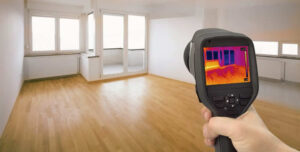Detect Concealed Water Line Leaks: Six Smart Detection Tips
Detect Concealed Water Line Leaks: Six Smart Detection Tips
Blog Article
They are making a number of good pointers on Locating water leaks as a whole in this great article just below.

Early discovery of leaking water lines can reduce a possible disaster. Besides conserving you money, it will minimize the irritation and also frustration. The moment you locate a leak, calling your plumber for repair work is the most effective solution. Nevertheless, some little water leaks may not show up. If you can not identify it with your nude eyes, here are some hacks that aid.
1. Analyze the Water Meter
Every residence has a water meter. Examining it is a proven way that helps you discover leaks. For starters, turn off all the water sources. Guarantee nobody will certainly purge, utilize the tap, shower, run the washing machine or dishwasher. From there, go to the meter and watch if it will change. Because nobody is using it, there need to be no motions. If it relocates, that shows a fast-moving leakage. If you spot no modifications, wait an hour or two and examine back once more. This indicates you might have a sluggish leakage that can also be below ground.
2. Inspect Water Usage
Evaluate your water bills and also track your water usage. As the one paying it, you must observe if there are any type of discrepancies. If you detect sudden changes, regardless of your usage being the same, it means that you have leakages in your plumbing system. Bear in mind, your water expense should drop under the exact same range on a monthly basis. An abrupt spike in your expense indicates a fast-moving leakage.
A stable increase every month, also with the same behaviors, reveals you have a slow leak that's likewise slowly rising. Call a plumber to completely check your building, particularly if you feel a cozy area on your flooring with piping beneath.
3. Do a Food Coloring Examination
When it comes to water intake, 30% comes from bathrooms. If the shade somehow infiltrates your bowl during that time without flushing, there's a leakage between the container and also bowl.
4. Asses Exterior Lines
Do not forget to inspect your outdoor water lines also. Test faucets by attaching a garden tube. Ought to water seep out of the link, you have a loosened rubber gasket. Replace this and make sure all links are tight. It will certainly aid obtain it skillfully took a look at and preserved annually if you've obtained a sprinkler system. One tiny leak can throw away lots of water and also increase your water costs.
5. Assess the scenario and also check
House owners must make it a practice to inspect under the sink counters as well as even inside cabinets for any bad odor or mold and mildew development. These two red flags indicate a leakage so punctual focus is needed. Doing routine inspections, also bi-annually, can save you from a major problem.
If you know your residence is currently old, maintain a careful eye on your heating units, hose pipes, pipes etc. Look for stainings as well as compromising as many pipes and devices have a life expectancy. They will certainly additionally naturally weaken due to wear and tear. If you presume leaking water lines in your plumbing system, do not await it to intensify. Call an expert plumber immediately so you do not wind up with an awful mess in your house.
Early detection of dripping water lines can reduce a potential catastrophe. Some tiny water leakages may not be noticeable. Checking it is a proven way that helps you discover leakages. One little leakage can waste lots of water and surge your water costs.
If you suspect dripping water lines in your plumbing system, do not wait for it to escalate.
WARNING SIGNS OF WATER LEAKAGE BEHIND THE WALL
PERSISTENT MUSTY ODORS
As water slowly drips from a leaky pipe inside the wall, flooring and sheetrock stay damp and develop an odor similar to wet cardboard. It generates a musty smell that can help you find hidden leaks.
MOLD IN UNUSUAL AREAS
Mold usually grows in wet areas like kitchens, baths and laundry rooms. If you spot the stuff on walls or baseboards in other rooms of the house, it’s a good indicator of undetected water leaks.
STAINS THAT GROW
When mold thrives around a leaky pipe, it sometimes takes hold on the inside surface of the affected wall. A growing stain on otherwise clean sheetrock is often your sign of a hidden plumbing problem.
PEELING OR BUBBLING WALLPAPER / PAINT
This clue is easy to miss in rooms that don’t get much use. When you see wallpaper separating along seams or paint bubbling or flaking off the wall, blame sheetrock that stays wet because of an undetected leak.
BUCKLED CEILINGS AND STAINED FLOORS
If ceilings or floors in bathrooms, kitchens or laundry areas develop structural problems, don’t rule out constant damp inside the walls. Wet sheetrock can affect adjacent framing, flooring and ceilings.
https://www.servicemasterbyzaba.com/blog/how-to-detect-water-leakage-in-walls/

We are very excited about Top leak detection hacks and I hope you enjoyed our page. Remember to take the opportunity to promote this article if you appreciated it. I thank you for reading our article about Locating water leaks.
Pipe issues? Connect. Report this page